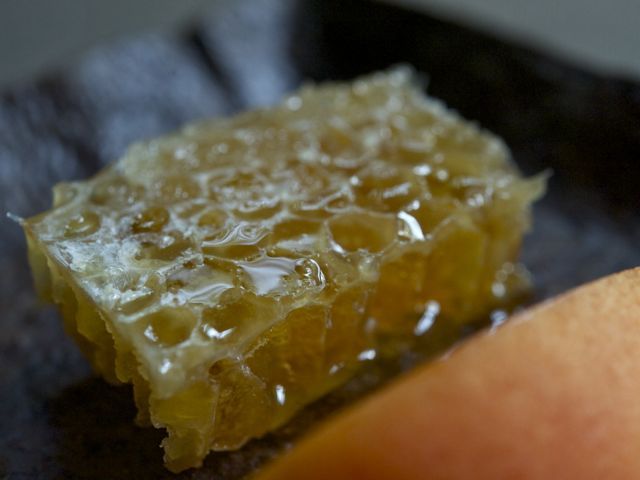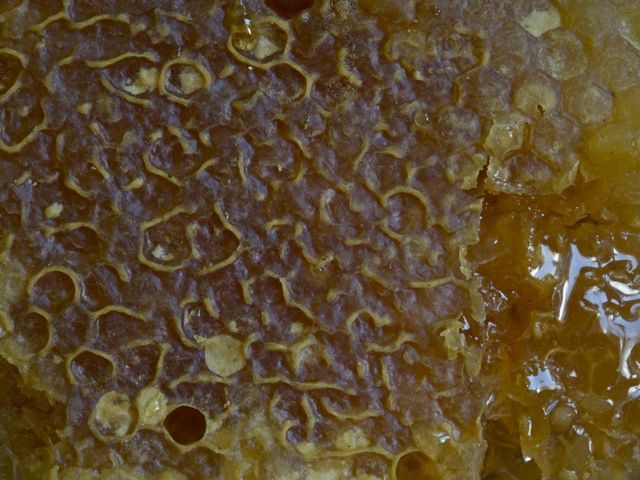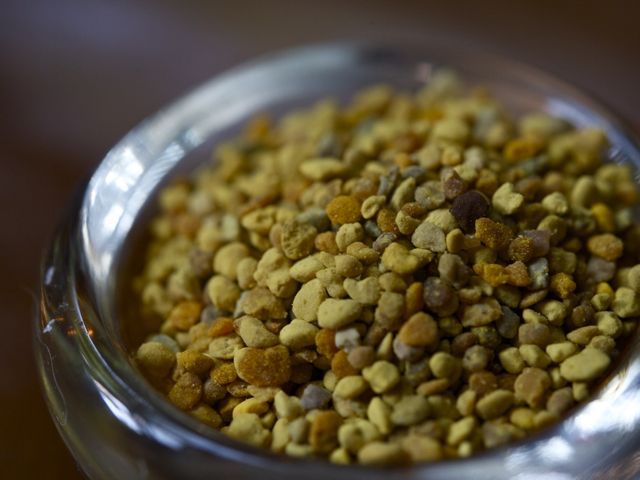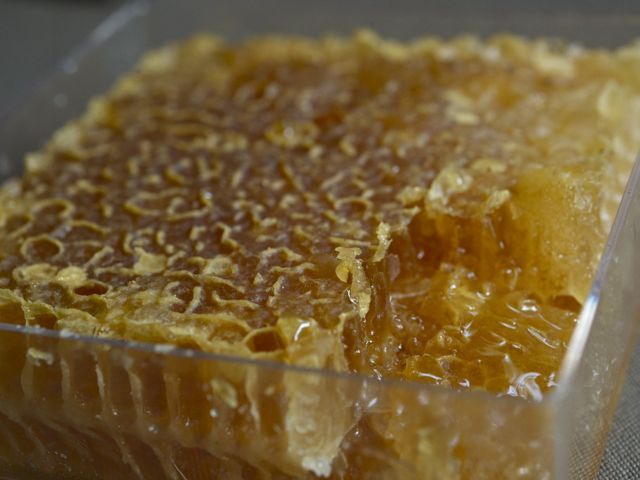6.11.12 Waxing Poetic
We went to the 16th annual tractor parade in Callicoon yesterday (yes, exactly what is sounds like) and came across a stand selling raw local honey at the nearby farmers market. I love honey so much—its amber hues, its range of floral and earthy flavors, its dense sweetness—and, now that I've learned a bit more about it, I try to buy the least processed honey I can find. The next step, of course, is to start raising our own bees, and I think that's not too far off. We may try to do it on our roof so that we can avoid the whole electric fence/bear situation. These lovely people from Walton, NY, had brought a wealth of choices to the market: clover, buckwheat, basswood, wildflower, apple, goldenrod and raspberry honeys. Honey is the concentrated nectar of flowers, and its subtly detectable flavors reflect whatever blossoms are most pervasive at the moment it's made. Talk about terroir! The buckwheat is always a much darker color and has a pronounced muskiness that can sometimes be quite bold.
In addition to all these flavors, I was thrilled to discover fresh honeycomb in clear boxes, and little jars of bee pollen. A honeycomb is a mass of hexagonal wax cells that honey bees build to contain their larvae and stores of honey and pollen. The wax is secreted from the underside of the worker bees' abdomens and they use their legs to mold it into the right shape. You can mash it and eat the honey that oozes out from it, or pop a piece in your mouth and eat the whole thing. When it's very fresh, the wax is sort of chewy and crunchy and dissolves quite easily in your mouth. It's a divine wild treat that's not easy to come by. I was once served a small precious square of it on a slab of local bluestone at the tail end of a very refined dinner at Stone Barns. It pairs beautifully with cheese and fruit.
Bee pollen–sometimes called "bee bread"—is small, nutrient-dense granules made from the pollen that foraging bees bring back to the hive. There, the worker bees mix it with nectar, enzymes, fungi and bacteria to create a superfood that is their primary source of protein. It's 30-40% protein and contains every vitamin and amino acid, 25 trace elements, and omega-3 and omega-6 fatty acids. Look for it at farmers markets and health food stores. Because consumption of bee pollen can sometimes cause an allergic reaction, it’s wise to ingest only a tiny amount at first before gradually increasing consumption. Adults should start with 1/2 teaspoon in the morning before eating, followed with some water or juice. Increase intake daily by a few grains until you reach 2 teaspoons; you can eat up to a tablespoon every day. (Children should only be given half this amount.) Pay attention to your body throughout the day for any symptoms of an allergic reaction; it may take up to three days for your body to produce a reaction.Once you’re confident it agrees with you, mix bee pollen into a smoothie, or try it sprinkled over yogurt or oatmeal. It can also be eaten alone, but has a rather intense taste and can be a bit gritty. As with flax seeds, you need to chew the granules or break them down before swallowing in order to get the full value of their nutrition.
As with raw milk, pasteurization of raw honey kills much of its nutritional value. High heat kills yeast cells, prevents fermentation and slows down the speed of crystallization, but it also partially destroys the wonderful aroma and the valuable enzymes responsible for activating vitamins and minerals in the body. One of these enzymes is amylase, which helps predigest starchy foods. (Go ahead, slather that toast with honey!) Raw honey often looks a bit cloudier than processed honey, and sometimes contains flecks of bee pollen and wax. It tends to crystallize, but avoid liquefying it with high heat (as in the microwave). Heat it very gently, preferably by submerging it—in its sealed jar—in warm water.Raw honey is known to have antiseptic, antibacterial and antifungal properties, and contains inhibine, an antiseptic substance that helps prevent infection and speeds healing. Since ancient times, honey in its raw state has been used to soothe gastric disorders, burns, rashes, allergies, asthma and sore throats. Bees also combine tree sap with their own secretions to make a substance called propolis, which they spread around the honeycomb to protect it from bacteria. Since raw honey contains traces of pollen and propolis, it acts almost like a homeopathic remedy to help treat allergies to flowers and plants. This is why it makes sense to eat local honey, since it will contain the essence of plants in your area.
One way to enjoy the distinctive flavors of different honeys is to match them with cheeses. A lightly floral wildflower honey perfectly complements a fresh ricotta. A buckwheat honey with notes of molasses pairs well with a very rich, mushroomy blue like Fourme d'Ambert. Collect a few honeys and arrange little bowls of them on a cheese plate the next time you entertain. Or, if you can get your hands on some honeycomb, offer tiny squares to eat with a little cheese and fruit. Here, I've got a couple of slices of a perfect apricot (from Frog Hollow Farm) with a piece of that salty, funky Sicilian pecorino I so adore. It's the bee's knees.











2 Comments